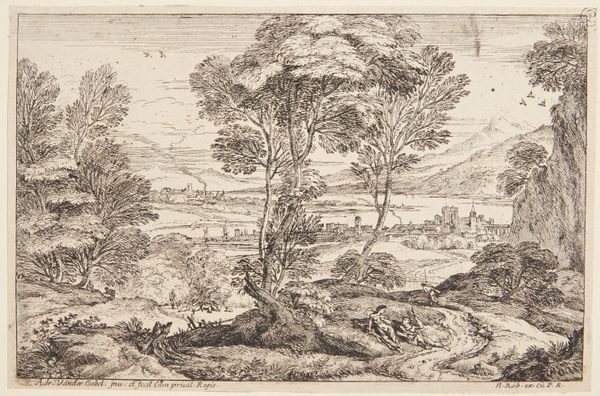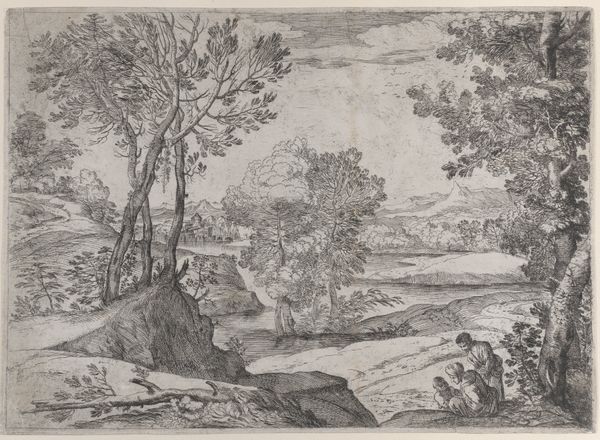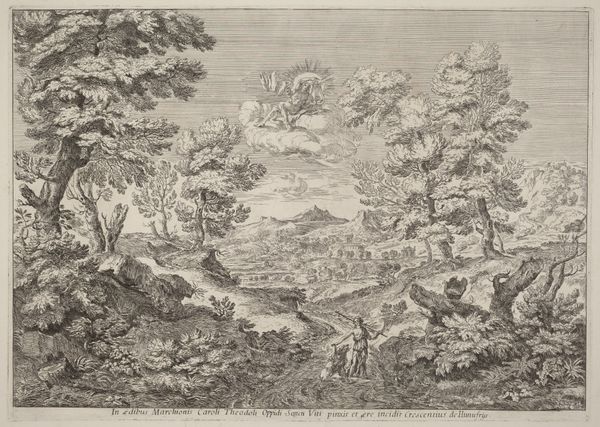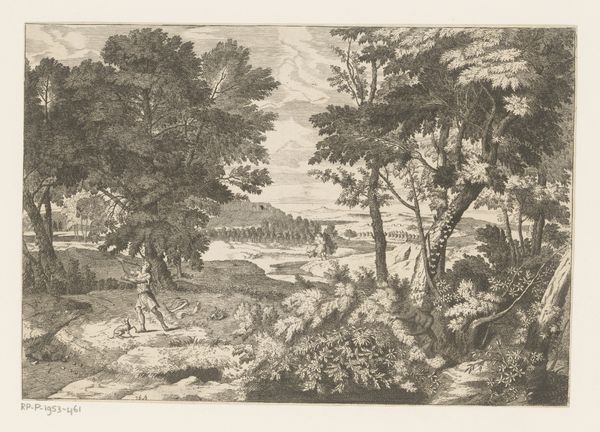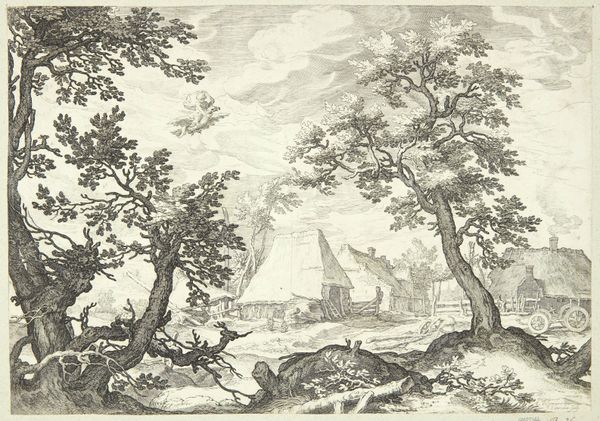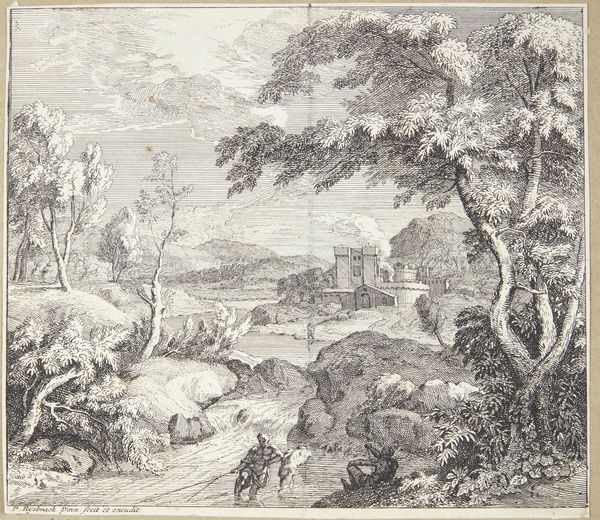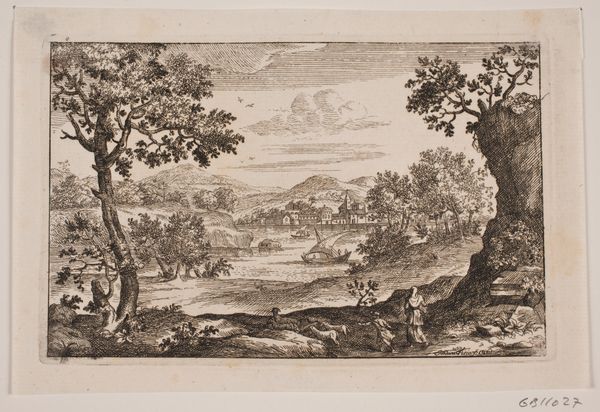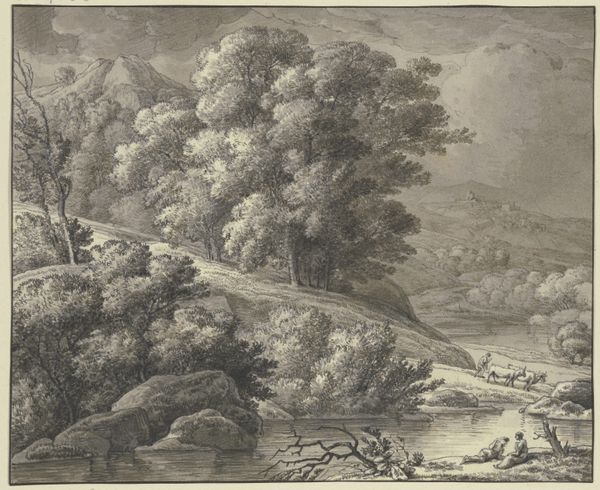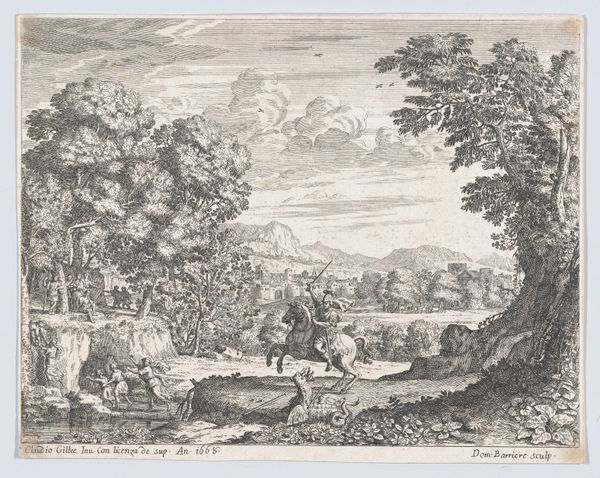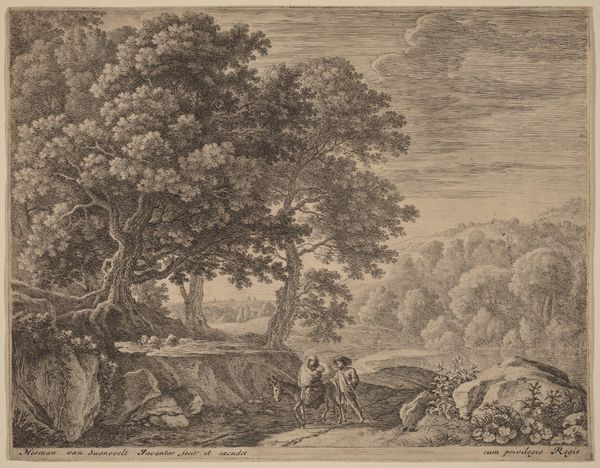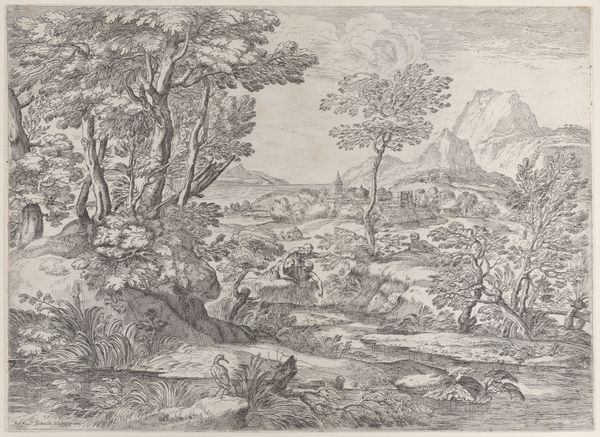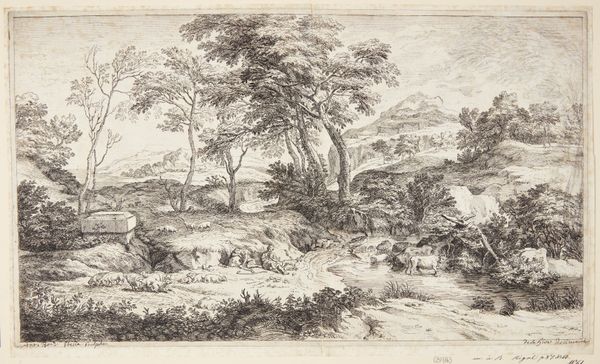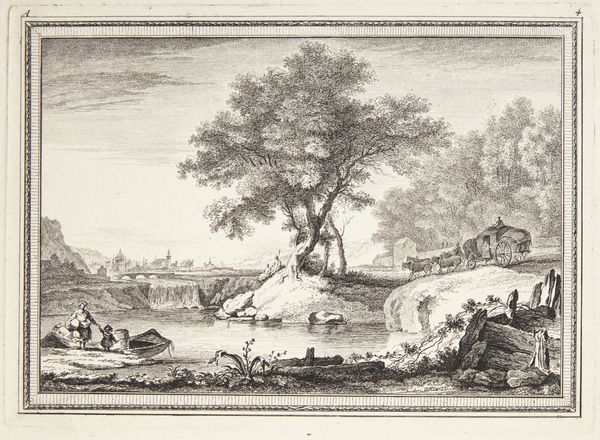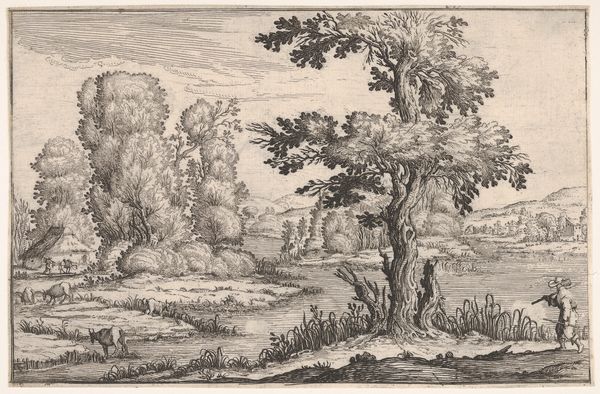
print, etching
#
narrative-art
#
baroque
# print
#
etching
#
landscape
#
line
#
history-painting
Dimensions: 246 mm (height) x 428 mm (width) (bladmaal)
Curator: Immediately, I’m struck by the detailed linework, the almost obsessive rendering of every leaf and ripple in the water. It's a masterclass in the use of etching to create texture. Editor: Indeed. This is Adriaen van der Kabel’s, "Rest on the Flight into Egypt," likely created sometime between 1630 and 1705. Here we have an etching, a print, currently residing in the Statens Museum for Kunst. Now, considering it from a socio-political angle, how might this fit into the broader context of religious imagery at the time? Curator: Formally, the way van der Kabel manipulates line density is particularly compelling. See how he uses it to suggest depth and shadow? The interplay between the foreground's darker, denser marks and the background's sparser lines creates a palpable sense of atmosphere. Semiotically, we can understand this in terms of binary opposition – dark versus light, near versus far – to construct meaning. Editor: Precisely. And considering the history of persecution depicted, and the power dynamics implicit in images of refuge, this print raises important questions about who is welcomed and who is not in 17th century Europe. Also, this piece's title includes reference to the Flight into Egypt, which means this piece has narrative functions related to its display and interpretation in a domestic or a devotional context, what impact would its location of display have? Curator: A powerful point. Yet, one cannot overlook how the formal qualities shape our reception of the narrative. The line, the scale, and the density combine to evoke, even in the depiction of their flight, a deep serenity. Observe how the careful placement of the figures in the composition encourages the eye to move gently across the landscape. The organization almost diminishes the subject. Editor: But perhaps this is intentional. Consider the power and protection the Church once possessed. By embedding this family, our protagonists, in the earth, he provides us, the viewers, a clear picture. By bringing their bodies back to the world, the creator displays the trust the family has with their land, the earth on which they live, in times when religion and those in charge are betraying the moral responsibility they were supposed to instill. Curator: So well observed! Viewing "Rest on the Flight into Egypt" through both a formal and historical lens grants a fuller appreciation of the print's nuances and cultural relevance. Editor: Absolutely. Engaging with art in this way reminds us that these artifacts, beyond their visual appeal, embody historical context and social meaning, adding to their lasting emotional and social resonance.
Comments
No comments
Be the first to comment and join the conversation on the ultimate creative platform.
